Is Rutland really England's smallest county?
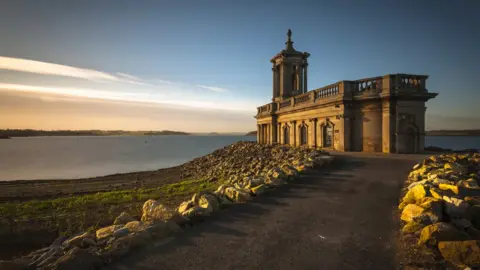 Getty Images
Getty ImagesRutland - soon to have its first McDonald's restaurant - is often celebrated as the smallest county in England.
But is this really true? Do any other places have a claim to the title?
What is a county?
Now you're asking. It turns out there is more than one type of county, depending on what function you're talking about.
First off you have the historic or traditional counties - arguably what the majority of people would consider the definitive list.
For centuries these geographic boundaries formed the backbone of the nation's governance and administration.
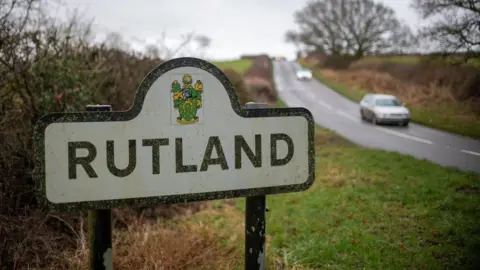 PA Media
PA MediaThe Office for National Statistics (ONS) says while this arrangement is no longer used for administrative purposes, it is "recommended as a stable, unchanging geography which covers the whole of Great Britain".
The Historic Counties Trust - a charity that works to promote and increase public awareness of the UK's historic counties - lists the 39 English counties as:
Bedfordshire, Berkshire, Buckinghamshire, Cambridgeshire, Cheshire, Cornwall, Cumberland, Derbyshire, Devon, Dorset, Durham, Essex, Gloucestershire, Hampshire, Herefordshire, Hertfordshire, Huntingdonshire, Kent, Lancashire, Leicestershire, Lincolnshire, Middlesex, Norfolk, Northamptonshire, Northumberland, Nottinghamshire, Oxfordshire, Rutland, Shropshire, Somerset, Staffordshire, Suffolk, Surrey, Sussex, Warwickshire, Westmorland, Wiltshire, Worcestershire and Yorkshire.
The Local Government Act 1972, a major reorganisation of public administration, saw the map redrawn and the introduction of metropolitan counties like Greater Manchester, South Yorkshire and the West Midlands, with further changes since.
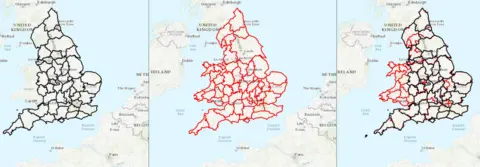 MHCLG
MHCLGIt leaves the nation made up of a confusing patchwork of administrative counties and unitary authority areas, as addressed in this article by the Association of British Counties.
And to further muddy the waters you have the ceremonial counties. This 48-county list breaks up the country by areas covered by Lords Lieutenant - representatives of the Crown - as defined by the Lieutenants Act 1997.
The list includes areas like Bristol and the City of London that most people might not necessarily consider a county.
Great - so is Rutland still the smallest?
As you might have gathered from the previous section, this all depends which list of counties you're working from.
If we go by the historic counties list, Rutland is indeed the smallest with a total area of 382 sq km (147.4 sq miles), according to the Office for National Statistics (ONS).
 Getty Images
Getty ImagesBut if you're working from the ceremonial counties list, we have a different champion for you.
Step forward the City of London - the capital's primary Central Business District and home of the Stock Exchange and Bank of England.
It may measure just 3 sq km (1.15 sq miles) but it is still listed among the ceremonial counties and therefore takes the title of being smallest on the list by some distance.
What about the Isle of Wight?
An oft-repeated "fact" states the Isle of Wight is actually England's smallest county - but only when the tide is in.
So could Rutland's title be under threat? It would appear not.
First of all, the Isle of Wight is listed as a ceremonial county but not as a historic county - the Historic Counties Trust has it forming part of Hampshire.
But what of its size?
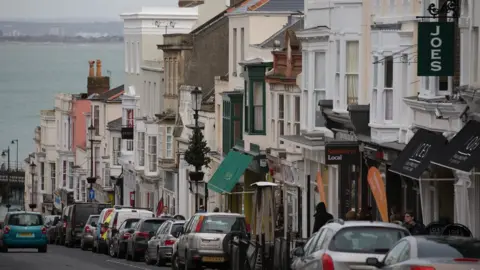 Getty Images
Getty ImagesThe ONS states it is 380 sq km (146.7 sq miles) in size - so marginally smaller than Rutland, but clearly much larger than the tiny ceremonial county of the City of London.
And if we remove the City of London from the equation, the ceremonial county of Bristol still comes in smaller, at 110 sq km (42 sq miles).
So sadly - whether the tide is in or out - the Isle of Wight has no claim whatsoever to being England's smallest county.
Is Rutland the smallest by population too?
According to 2018 ONS estimates, the City of London boasts a population of 8,706, the lowest of the ceremonial counties, while Rutland has 39,697 people, the lowest of the traditional counties.
So as you were, basically.
Why do counties matter?
The Historic Counties Trust is dedicated to promoting the history, geography, architecture and traditions of historic counties.
It said: "They are much more than a convenient geographical reference frame. They are fundamental to our notion of what our country is and of our own place within it."
 PA Media
PA MediaThe trust added: "People's affinity for their county goes deep. Their idea of home is bound up with their native shire and all it stands for.
"The historic county provides a living link to past generations who trod the same ground and nurtured the same loyalties."
The trust added that these counties "speak to us of the wonderful diversity" of the country, with "each possessing its own distinctive history, landscapes, traditions, dialects and building styles".
You may also be interested in:
Is Rutland proud of its small size?
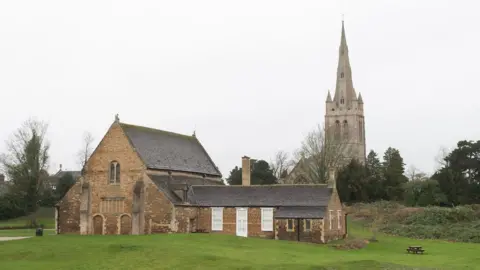 PA Media
PA MediaOliver Hemsley, leader of Rutland County Council, certainly thinks so.
"There are good things in little packages and I think people who live in Rutland are genuinely proud to belong to England's smallest county," he said. "That being said, there's much more to us than just our size.
"Rutland is special because of the big-hearted people who live here. We have close-knit communities, great attractions for families, important historical sites and the famous Rutland Water for cycling, sailing and wildlife.
"In every sense, Rutland truly embodies its Latin motto, Multum In Parvo, meaning 'much in little'."

Follow BBC East Midlands on Facebook, on Twitter, or on Instagram. Send your story ideas to [email protected].
